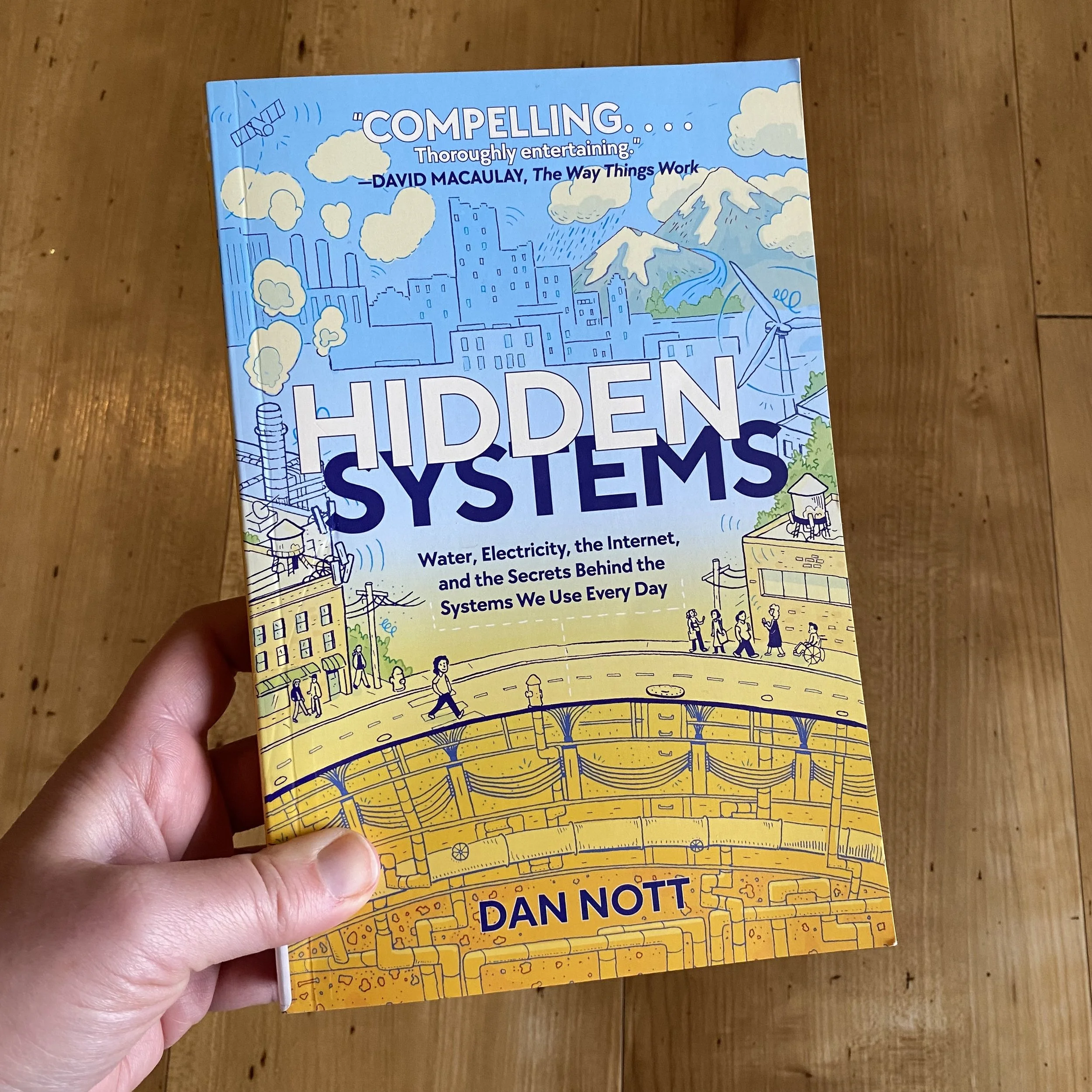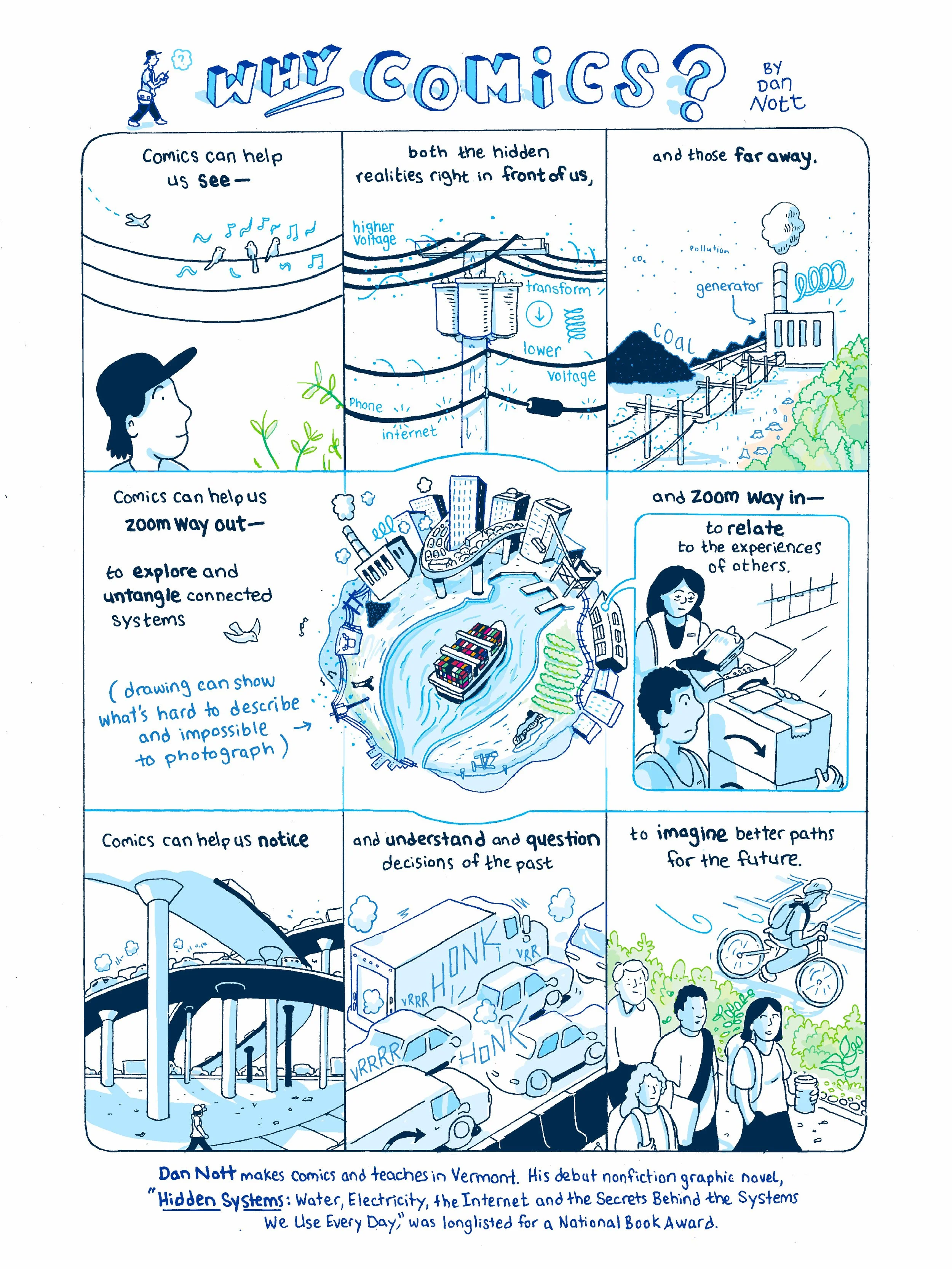Hidden Systems
Book #8
November 2024
Hidden Systems: Water, Electricity, the Internet, and the Secrets Behind the Systems We Use Every Day by Dan Nott
I originally checked this book out from the library for my kids. It was filed in the teen section of the library and promised to explain systems like electricity. My son started reading the book and said it was really complicated and he didn’t “get it” (I soon found out that what he had read were a series of metaphors, explained through comics, that have been used over time to explain the internet). I picked up the book and started reading and found something very inspiring.
About the book
The content
This is a very well researched story of how history, science, technology and ecology come together to create the systems we take for granted: water, electricity and the internet. The author doesn’t pretend to know everything, but instead tells a story about his curiosity in these systems, the origins of the systems, what they look like and where they’re headed. In the process of reading this story, the reader builds a framework of understanding the systems and why equitable access to these systems is important.
The format
The entire story is told in comics. The author started using comics to look at hidden systems for his thesis project at the Center for Cartoon Studies in Vermont. The thesis was the beginning of this book.
Illustration is a valuable tool
This book is a beautiful example that sometimes illustrations work better than photographs, charts, or technical diagrams, because they can hone in on exactly the thing that you’re wanting to communicate. In the author’s notes, he says “I’m often prioritizing clarity over visual precision”.
Comics are a valuable tool
I’ve spent a lot of time reading with my kids over the last few years. Graphic novels and comics are favored by many children and are quite popular at the moment. Naysayers will categorize comics and graphic novels as too easy, having much less text than other books, not requiring users to use their imagination. On the flip side, you could say that comics and graphic novels offer a lot of support to the reader, there’s a lot of visuals to add meaning to the text, we see characters and events throughout time, readers see facial expressions that communicate emotions and color plays a big role in communicating mood. In Hidden Systems, the author is dealing with really complex information, but uses the language of comics to walk readers through things that are hard to visualize. Maybe comics aren’t just for entertainment. Maybe they can support readers through really complicated, hard to digest content. Maybe they can help us visualize things we’ve never seen before.
You will learn some new things about the internet
If you’re currently working in tech and the internet… you should read the first section of the book “Lines of Light.” The author explains the metaphors we have used to explain the internet, shows the physical things that create the internet, and tells a complex story about politics, history and economics influencing the infrastructure of the internet. If the infrastructure is influenced by politics, history and economics, so is equitable access to the internet.
The author’s site is www.dannott.com


